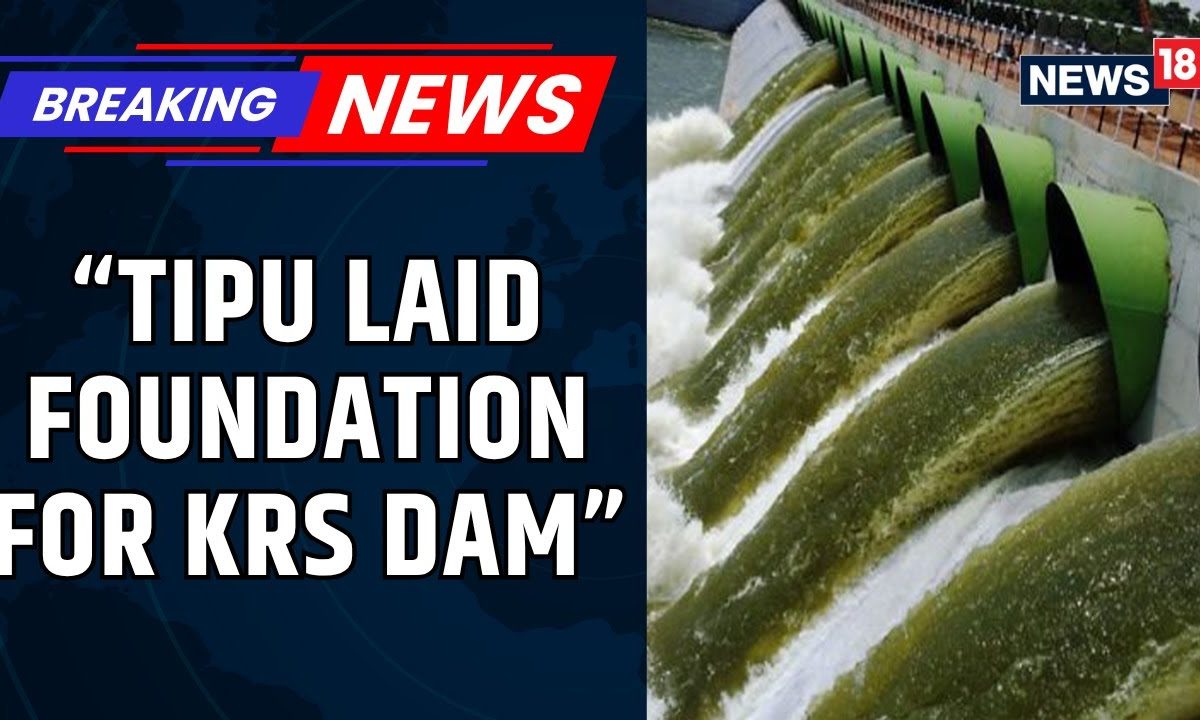

A recent statement by Karnataka's Social Welfare Minister, H.C. Mahadevappa, has ignited a heated debate by asserting that Tipu Sultan, the 18th-century ruler of Mysore, laid the foundation for the Krishna Raja Sagar (KRS) Dam. This declaration, made at a public event in Srirangapatna, has drawn strong reactions from historians, political figures, and the public, sparking a controversy over historical accuracy and political motivations.
Mahadevappa, who is also the Mysuru District In-Charge, claimed that Tipu Sultan initially planned and laid the foundation for the reservoir, a fact he says is inscribed at the main gate of the KRS dam. He lamented that many people are either unaware of this history or lack the courage to acknowledge it. The minister went on to highlight Tipu Sultan's progressive measures, such as abolishing the devadasi system, introducing silk to India, and resisting British colonial rule, characterizing him as a significant freedom fighter. Mahadevappa also pointed out Tipu's secular stance, noting that Tipu respected all faiths and built a mosque next to the Sri Ranganatha Temple in Srirangapatna.
However, Mahadevappa's claims have been met with swift and strong opposition. Yaduveer Krishnadatta Chamaraja Wadiyar, the Mysuru MP, has criticized the statement as "ridiculous" and accused the minister of attempting to distort history for political gain. He stated that there is no historical evidence to support Mahadevappa's claim and that historical records credit the construction of the KRS Dam to the Mysore royal family, particularly Nalwadi Krishnaraja Wadiyar.
Historians have largely echoed Yaduveer's sentiment. They emphasize that the KRS Dam, as it exists today, was conceptualized and built under the patronage of Nalwadi Krishnaraja Wadiyar in the early 20th century. While acknowledging that Tipu Sultan may have had a vision for waterworks, they argue that directly linking him to the KRS Dam overlooks the documented engineering and administrative efforts of the Mysuru royal family. Historian N.S. Rangaraju stated that while there is an inscription documenting Tipu Sultan's interest in building a dam, claiming he laid the foundation for the current KRS dam is far-fetched. He cautioned against comparing historical figures across different eras, noting the advancements in science and technology available to later rulers.
The Karnataka government's water resource department website states that the construction of the KRS Dam commenced in 1911 during the reign of Krishna Raja Wadiyar Bahadur and was completed in 1931. The project was developed by the renowned civil engineer Sir M. Visvesvaraya.
Critics like historian Talakadu Chikka Rangegowda have called Mahadevappa's remarks ignorant, clarifying that while Tipu Sultan might have envisioned a dam in the KRS region, he did not initiate any actual work on it. They insist that the dam's development was spearheaded by Nalwadi Krishnaraja Wadiyar, who employed British engineering methods.
This controversy comes at a time when historical figures and their legacies have become increasingly politicized in Karnataka. Mahadevappa's statement is seen by some as an attempt to polarize voters along religious lines, especially given documented instances of temple destruction during Tipu Sultan's reign. Others view it as an effort to recognize Tipu Sultan's contributions to the region and his progressive policies.